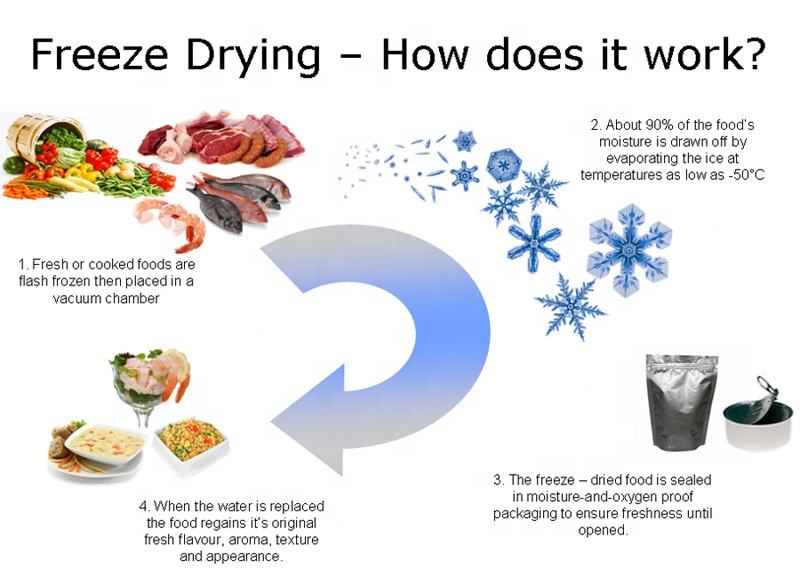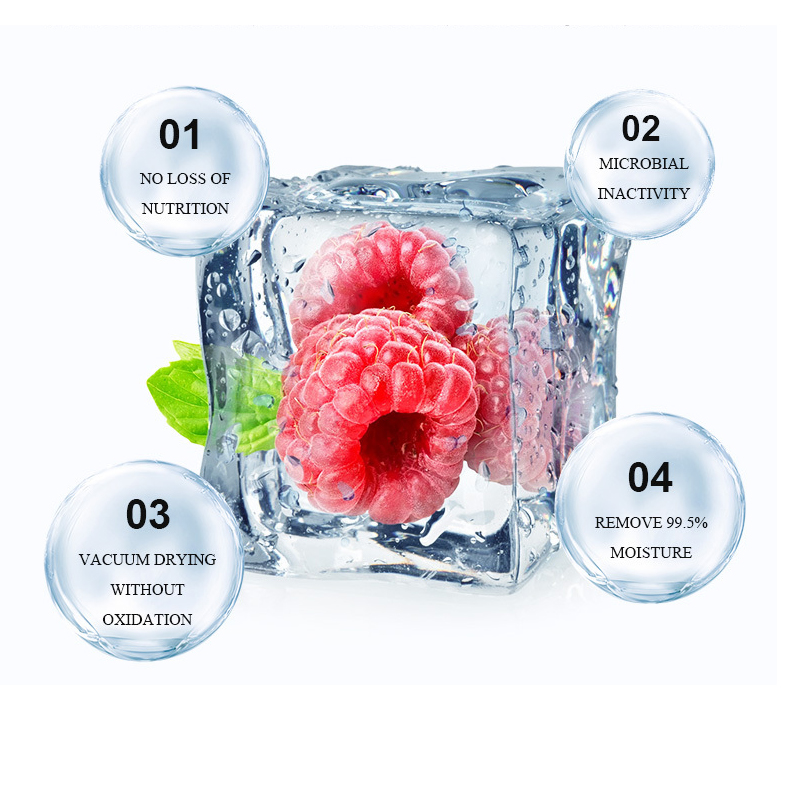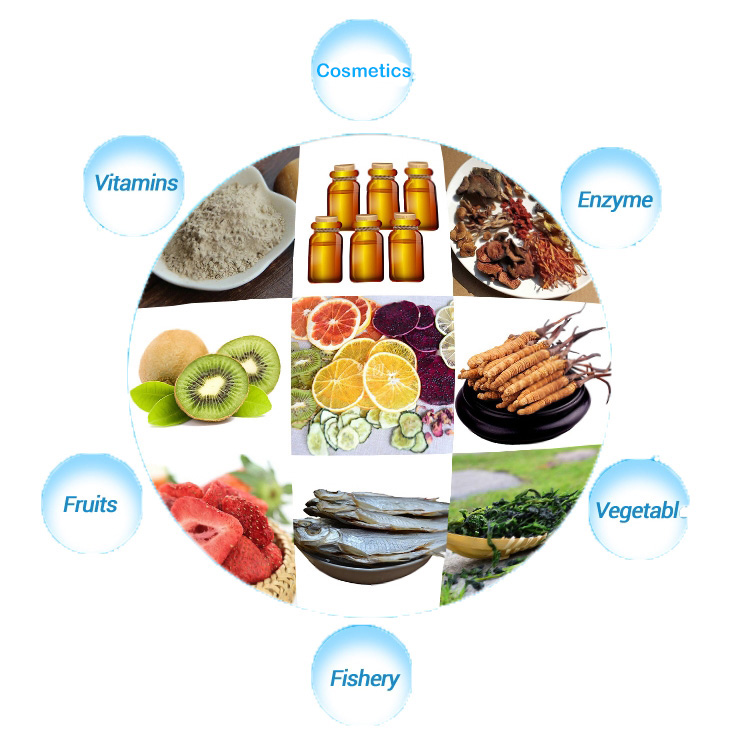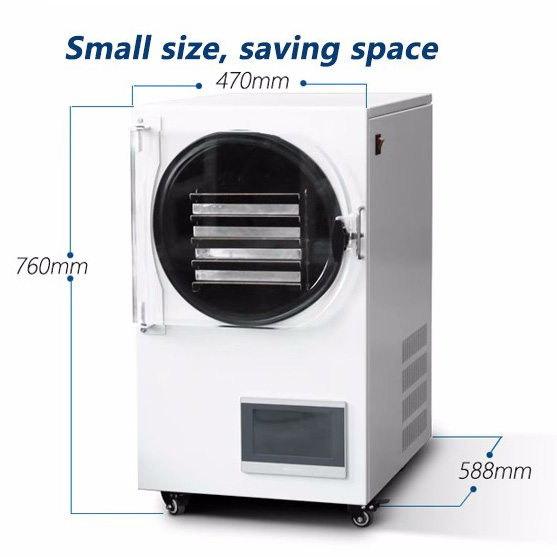Freeze-drying technology plays a crucial role in modern society, serving an important function across various fields such as the food industry, pharmaceutical sector, and scientific research. What exactly is freeze-drying, and what is the principle behind this technology? Let’s explore the answers to these questions.
Understanding the Principle of Freeze-Drying
Freeze-drying, also known as lyophilization or freeze-drying technology, is based on a complex physical process—sublimation under freezing point. This process includes the following key steps, aimed at directly transforming water molecules from solid to gas without passing through the liquid state, thereby preserving the original structure and characteristics of the substance.

Pre-treatment
Pre-treatment is the preparation stage, where different materials require different methods of handling. For instance, food might need to be cleaned and cut into small pieces to increase its surface area and promote drying efficiency.
Freezing
Freezing is the cornerstone of the freeze-drying process, where the material is cooled below the triple point to ensure that moisture is removed through sublimation. The speed and temperature of freezing directly affect the quality of the final product.
Primary Drying
Under reduced pressure and gradually increasing temperature, ice crystals begin to sublimate. This stage mainly removes a significant portion of water, which is vital for maintaining the structural and functional integrity of the material.
Secondary Drying
After primary drying, a small amount of moisture remains. The secondary drying stage removes this residual moisture by further increasing the temperature, ensuring the long-term stability of the product.

Applications of Freeze-Drying Technology
Food Industry
Freeze-drying technology is particularly widespread in the food industry, where it minimizes the loss of nutrients in food without the need for any preservatives, while maintaining the color, taste, and freshness similar to fresh food. Additionally, freeze-dried food is small in volume, lightweight, and has a long shelf life, making it highly suitable for outdoor travel, emergency disaster relief, and other scenarios.
Pharmaceutical Industry
In the pharmaceutical industry, freeze-drying technology is crucial for the stability and shelf life of vaccines, antibiotics, and biologics. Through freeze-drying, medications can be transported and stored without the need for refrigeration, greatly facilitating the circulation and use of drugs.
Biotechnology Research
Freeze-drying technology also shows its unique value in the field of biotechnology and scientific research, especially in the long-term preservation of biological samples such as DNA, plasma, cells, etc.

Significance of Freeze-Drying Technology for Consumers
For consumers, the greatest benefits of freeze-drying technology are convenience and nutrition retention. Freeze-dried foods are not only easy to store and carry but also maintain a longer freshness period without the addition of preservatives. This means that consumers can enjoy healthier, tastier food options while reducing food waste.
Future Prospects of Freeze-Drying Technology
With continuous advancements and innovations in technology, the application areas of freeze-drying technology will become even broader. In the future, we can expect freeze-drying technology to play an even more significant role in space exploration, military applications, and disaster relief. Additionally, as consumer demand for healthy and convenient food increases, the market for freeze-dried foods is expected to continue to expand.






